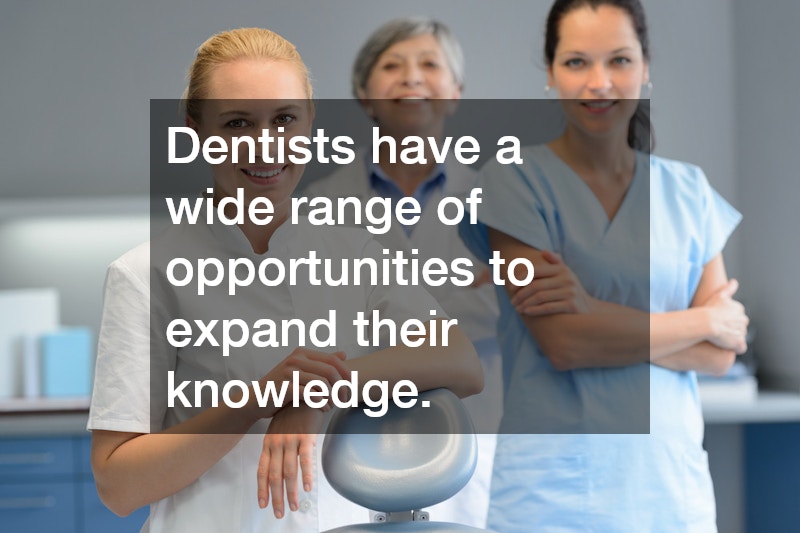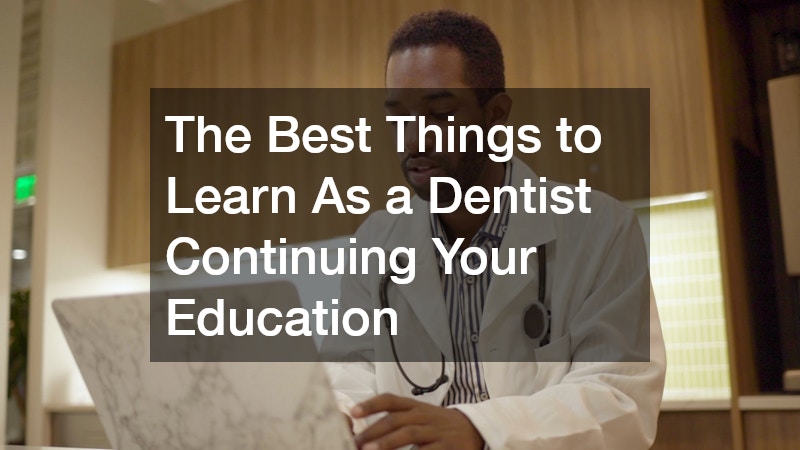
Dentistry is a dynamic field that constantly evolves with new technologies, treatment techniques, and patient care strategies. For dentists committed to providing the highest level of care, continuing education is not just beneficial. It is essential. Engaging in ongoing learning ensures that practitioners remain at the forefront of innovation while enhancing their ability to meet the diverse needs of their patients. From mastering advanced technology to improving communication skills and refining cosmetic techniques, dentists have a wide range of opportunities to expand their knowledge and elevate their practice.
This article explores some of the most essential areas for dentists to focus on as they pursue continuing education for dentists.
What Are the Latest Technological Advancements in Dentistry?
Staying current with technology is critical in modern dentistry, as new tools and techniques can improve patient outcomes, streamline procedures, and increase overall efficiency.
Digital Dentistry and 3D Printing
Digital dentistry has transformed how dental procedures are planned and executed. Techniques such as computer-aided design (CAD) and computer-aided manufacturing (CAM) allow for precise creation of crowns, bridges, and prosthetics. Additionally, 3D printing technology enables dentists to produce highly accurate dental models, surgical guides, and even temporary restorations quickly and efficiently. Continuing education in this area ensures that dentists can integrate these tools into their practice to improve both accuracy and patient satisfaction.
Advances in Dental Imaging Techniques
High-resolution imaging is essential for accurate diagnosis and treatment planning. Newer imaging modalities, such as cone beam computed tomography (CBCT), offer detailed three-dimensional views of teeth, bone, and soft tissue, allowing dentists to detect problems earlier and plan treatments with greater precision. Learning to interpret and apply these imaging techniques can significantly enhance diagnostic capabilities and patient care.
The Role of Artificial Intelligence in Diagnosis
Artificial intelligence (AI) is becoming increasingly valuable in dentistry, particularly in diagnostic applications. AI-driven software can assist in identifying cavities, assessing bone density, and even predicting potential oral health issues. By incorporating AI tools into their practice, dentists can improve diagnostic accuracy and efficiency while reducing the likelihood of human error.
Modern Implant Technology
Dental implants have seen remarkable technological improvements over the past decade. Innovations such as guided implant surgery, computer-aided implant planning, and surface-treated implant materials allow for higher success rates and faster healing. Dentists continuing their education in implantology can stay updated on these advances, providing patients with more predictable and effective solutions for missing teeth.
Minimally Invasive Treatment Options
Minimally invasive dentistry prioritizes preserving healthy tooth structure while achieving optimal treatment outcomes. Techniques such as laser dentistry, air abrasion, and advanced bonding systems enable dentists to perform procedures with reduced discomfort and quicker recovery times. Training in these methods allows practitioners to offer treatments that are less traumatic for patients while maintaining high clinical standards.
How Can I Improve My Patient Communication Skills?
Technical expertise alone is not enough to excel in modern dentistry. Effective communication is crucial for building trust, enhancing patient compliance, and improving overall satisfaction.
Understanding Patient Psychology
Patients often experience anxiety or fear when visiting a dentist. Understanding the psychological aspects of dental care, including common fears and behavioral responses, enables dentists to approach patients with empathy and sensitivity. Continuing education courses that focus on patient psychology can equip dentists with strategies to reduce anxiety and create a more positive experience.
Effective Counseling Techniques
Beyond clinical treatment, dentists often need to educate patients about oral health practices, treatment options, and potential risks. Learning effective counseling techniques helps practitioners communicate complex information clearly and persuasively, empowering patients to make informed decisions about their care.
Cultural Competency in Dentistry
Dentists serve patients from diverse backgrounds, each with unique beliefs, preferences, and communication styles. Cultural competency training enhances a dentist’s ability to provide respectful, patient-centered care. This includes understanding language differences, health literacy levels, and cultural attitudes toward dental treatment.
Building Trust and Rapport
Trust is the foundation of any successful dentist-patient relationship. Dentists who learn strategies for active listening, empathy, and consistent follow-up can build stronger relationships with their patients. This rapport not only improves patient satisfaction but also encourages long-term loyalty and adherence to treatment plans.
Utilizing Technology for Better Patient Engagement
Digital tools, such as patient portals, virtual consultations, and interactive educational content, can enhance patient engagement. Dentists who learn to leverage these technologies can improve communication, streamline appointment management, and provide patients with personalized care experiences.
Which Cosmetic Dentistry Skills Should I Master?
Cosmetic dentistry is a growing field, with patients increasingly seeking procedures that enhance the appearance of their smiles. Continuing education in cosmetic techniques allows dentists to meet this demand while maintaining high standards of care.
Teeth Whitening Techniques
Teeth whitening is one of the most sought-after cosmetic procedures. Dentists can benefit from training in various bleaching methods, including in-office treatments, take-home kits, and laser-assisted whitening. Understanding the latest techniques ensures safe, effective, and aesthetically pleasing results.
Veneers: Application and Innovations
Veneers are a versatile option for correcting discoloration, chips, and misaligned teeth. Continuing education courses in veneer application provide hands-on experience with different materials, preparation techniques, and bonding methods. Staying updated on innovations in veneer technology allows dentists to offer patients the most durable and natural-looking results.
Invisalign and Clear Aligner Technologies
Orthodontic treatments using clear aligners have gained popularity due to their convenience and aesthetic appeal. Learning about the planning, design, and implementation of clear aligner therapy equips dentists to provide effective orthodontic solutions without the need for traditional braces.
Dental Bonding and Contouring
Dental bonding and contouring are minimally invasive procedures that can correct minor imperfections in tooth shape or color. Continuing education in these techniques allows dentists to refine their manual skills, achieve more precise results, and enhance the overall appearance of patients’ smiles.
Smile Design and Aesthetic Innovations
Smile design combines art and science to create harmonious and attractive smiles. Advanced training in aesthetic dentistry covers digital smile design, facial analysis, and proportion assessment, enabling dentists to customize treatments that enhance both function and beauty. Mastering these skills can set a practice apart and attract patients seeking comprehensive cosmetic care.
Conclusion
Continuing education is essential for dentists who wish to stay current in a rapidly evolving field. By focusing on the latest technological advancements, improving patient communication skills, and mastering cosmetic dentistry techniques, practitioners can enhance both clinical outcomes and patient satisfaction. Ongoing learning ensures that dentists not only provide the highest standard of care but also remain competitive and innovative in their practices. In a profession where knowledge and skill continually evolve, investing in education is an investment in both professional growth and the oral health of the community.


